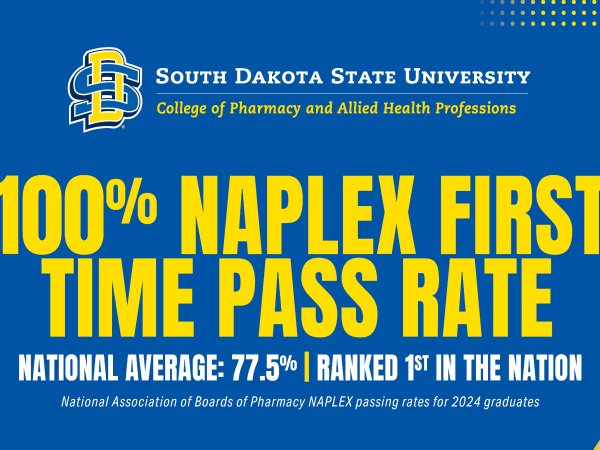South Dakota State University is home to groundbreaking technology in geospatial sciences.
One of the most innovative pieces of technology being used at the Geospatial Sciences Center of Excellence (GSCE) is a small shoe-box sized satellite called a CubeSat.
CubeSats are relatively low-cost commercialized alternatives to launching much larger and more expensive satellites, saving the GSCE millions of dollars and allowing them to make global impact from a town as small as Brookings.
“Given their relatively low costs (compared to conventional satellites), they can be launched in flocks to provide a much higher global revisit frequency,” said Rasmus Houborg, GSCE senior scientist.
Unlike conventional satellites, CubeSats focus on one particular area of land and frequently monitor any changes or growth patterns.
“This means that the same spot on the Earth can be monitored more frequently at high spatial resolution, which provides an unprecedented opportunity to detect rapid changes in cover conditions,” Houborg said.
GSCE and the Earth Resource Observation and Science (EROS) scientists team up to conduct and oversee research that’s used to solve real-world problems like preventing food insecurity, ensuring freshwater availability and monitoring environmental risk factors that can trigger malaria outbreaks.
“GSCE is an organization with a strong focus on doing groundbreaking and impactful research,” Houborg said. “GSCE scientists collaborate with many of the best scientists in the US and internationally, which reflects back on SDSU.”
Last August, ShanghaiRanking’s 2017 Global Ranking of Academic Subjects placed SDSU 27th worldwide, 7th in the nation and 3rd among land grant universities for research productivity in remote sensing.
Adam Dosch, GSCE’s Computer and Information Research Scientist, is responsible for bridging the gap between computer sciences and data gathered by the satellites.
The GSCE collects enough data to fill more than 2,500 one-terabyte flash drives, Dosch said, it’s challenging to solve large computing issues both logically and scientifically because of the mass quantity of information.
The name GSCE has established for itself is a testament to the idea that world-class research can be done in a “small town setting” without having to relocate to Big-10 or Ivy-league level academic areas, said Dosch.
The GSCE’s office in Wecota Hall employs students and staff from 17 different countries, all using CubeSat’s remote sensing data to gather information about environmental and human welfare.


















